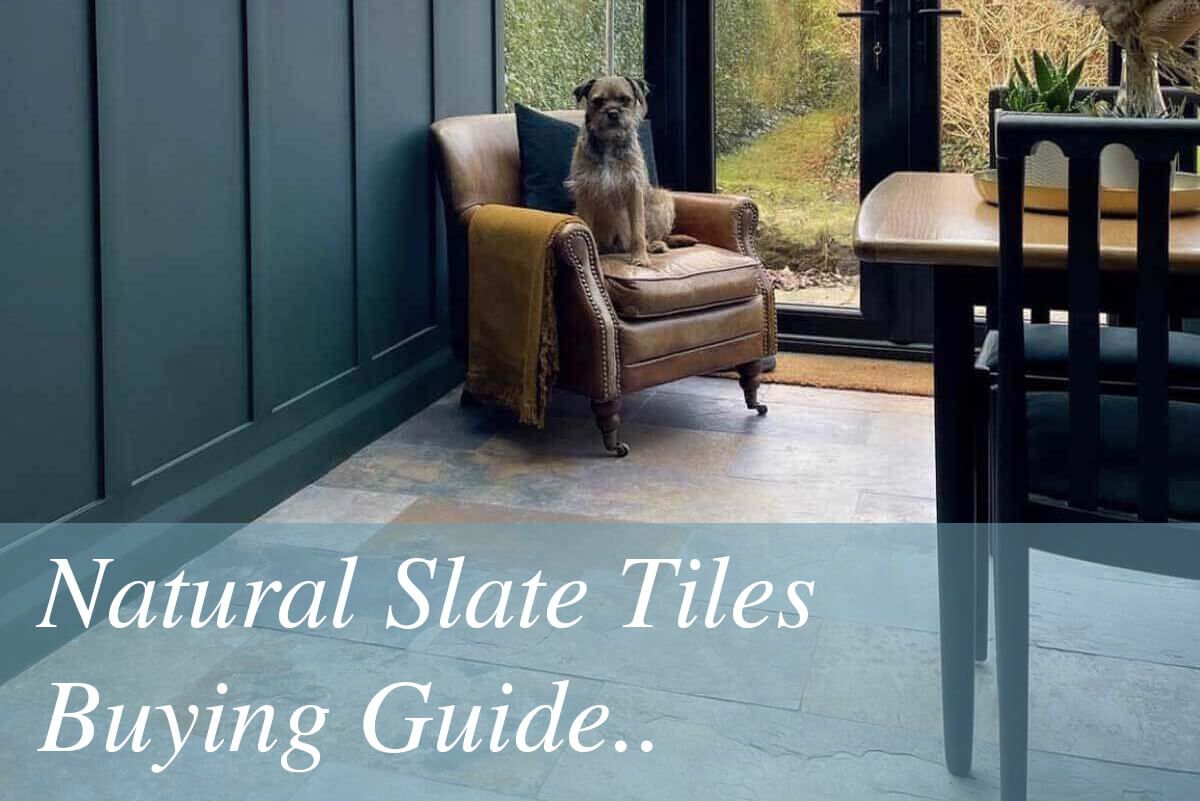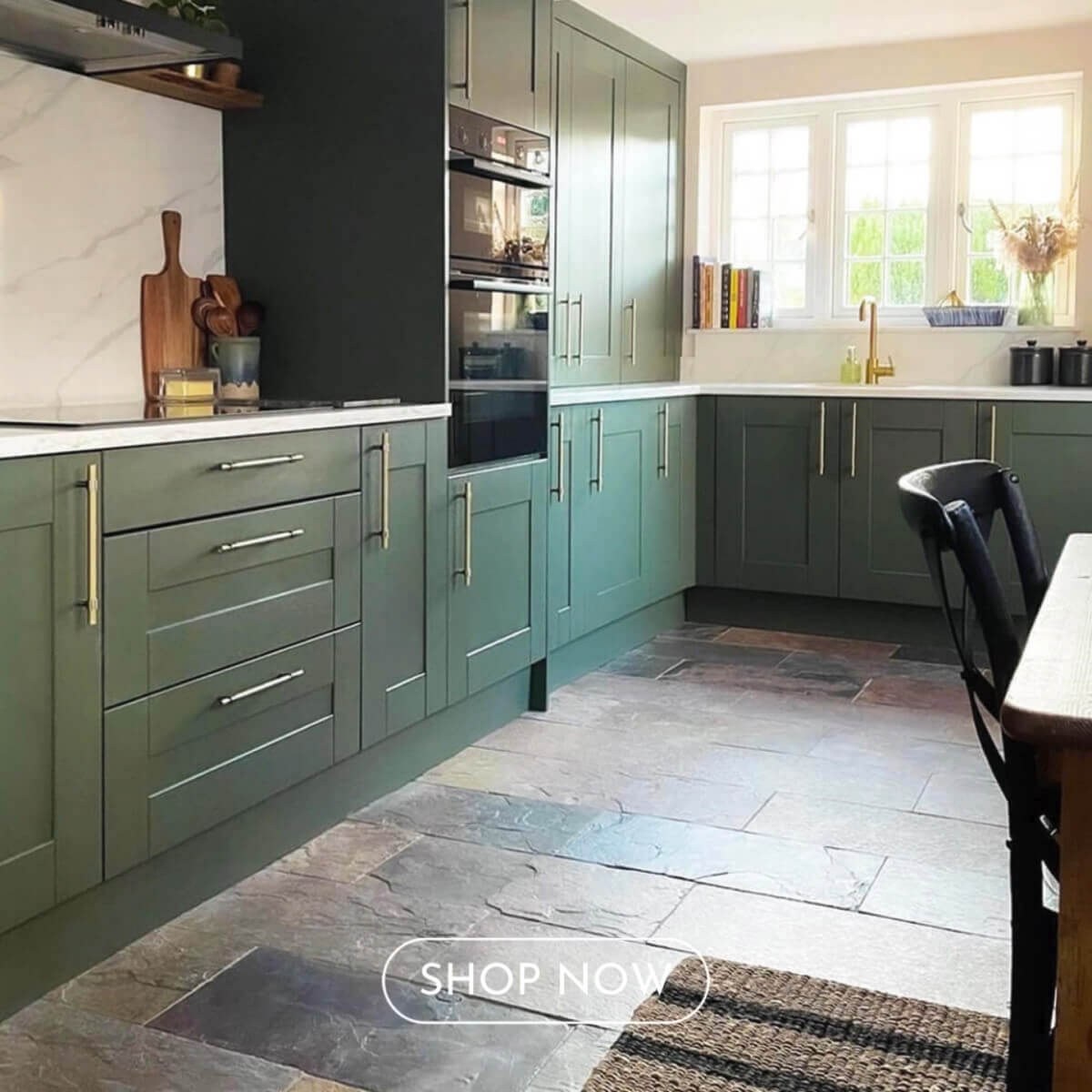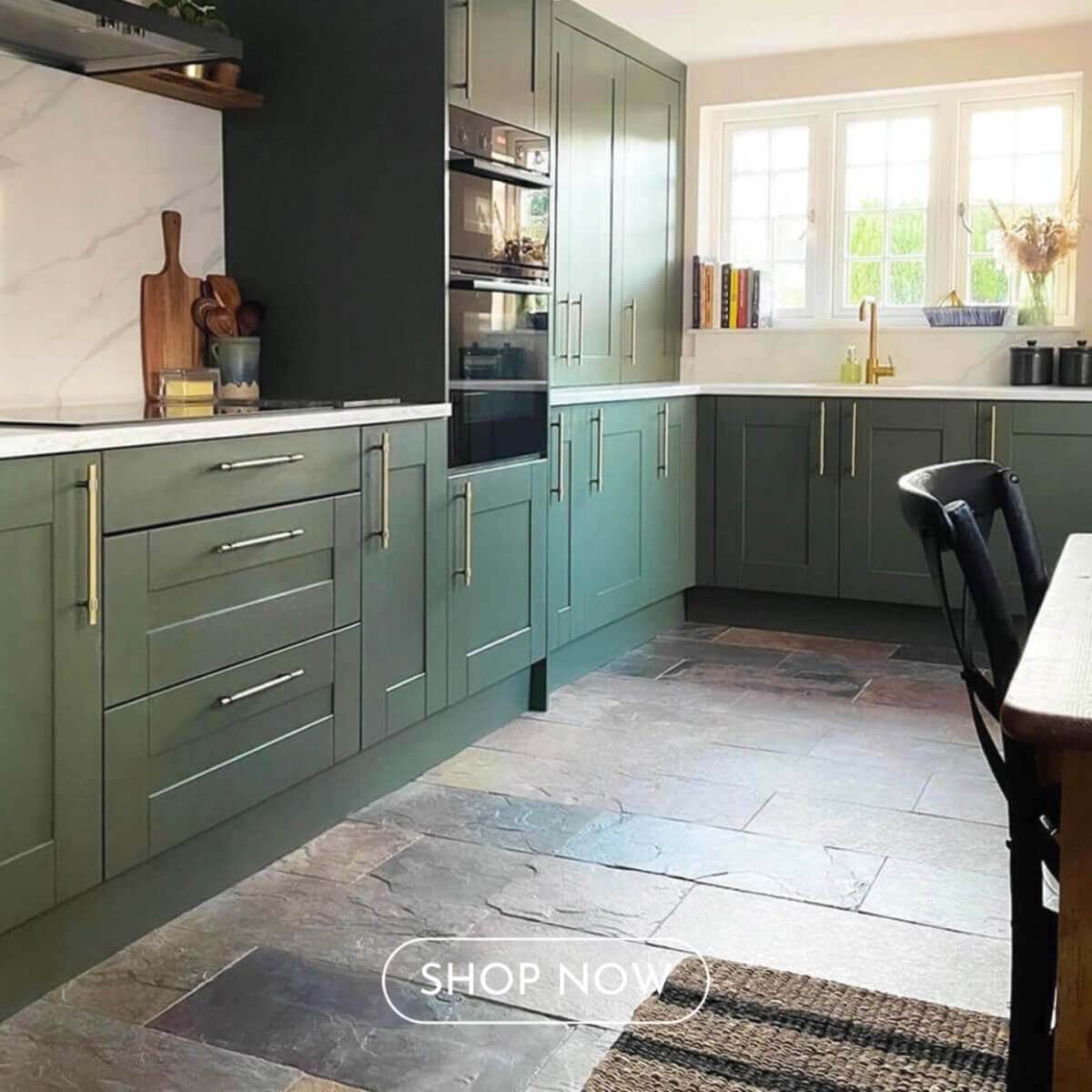Your Complete Natural Slate Tiles Buying Guide
Are you considering natural slate tiles for your next home improvement project? Look no further! In this comprehensive buying guide, we will provide you with everything you need to know about natural slate tiles. From their unique characteristics to their installation process, this article will be your ultimate go-to resource.
Natural slate tiles are known for their durability, elegance, and natural beauty. Whether you are planning to revamp your kitchen floor or upgrade your outdoor areas, these tiles offer a timeless appeal that can transform any space. However, with so many options available in the market, it can be overwhelming to choose the right slate tiles for your needs. That's where our buying guide comes in.
We will dive deep into the different types of slate tiles, popular colour choices, and factors to consider when making your purchase decision. Our stone experts will also share some valuable tips on maintenance and caring for your natural slate tiles to ensure they last for years to come.
So, if you're ready to embark on your natural slate tile journey, let's get started and explore the ultimate natural slate tiles buying guide!
What are benefits of natural slate tiles?
One of the key benefits of natural slate tiles is their durability. They are incredibly resilient and can withstand heavy foot traffic, making them an excellent choice for high-traffic areas in your home. Additionally, when slate tiles are sealed and correctly maintained they are resistant to stains, scratches, and moisture, making them suitable for both indoor and outdoor applications.
Another advantage of natural slate tiles is their unique aesthetic appeal. Each tile is one-of-a-kind, featuring distinctive patterns and textures that add character to any room. Whether you prefer a rustic, earthy look or a more contemporary style, there is a slate tile option to suit your taste.
Furthermore, natural slate tiles are an eco-friendly choice. They are made from natural stone, which means they are a sustainable and renewable resource. By opting for natural slate tiles, you can contribute to a greener environment while enjoying the benefits of a beautiful and long-lasting floor or wall solution.
What are the factors to consider when buying natural slate tiles?
Before diving into the world of natural slate tiles, it's important to consider a few factors to ensure you make an informed purchase decision.
Firstly, you need to determine the purpose of your project. Are you looking for tiles for a kitchen splashback, bathroom flooring, fireplace, patio garden walls or a garden bar? Different areas have different requirements, so understanding the intended use will help you choose the right type of slate tile.
Next, consider the size and shape of the tiles. Slate tiles come in various sizes and shapes, including squares, rectangles, flagstones and mosaics. The size and shape you choose will depend on the overall design of your space and the installation pattern you prefer.
Another crucial factor to consider is the colour and texture of the slate tiles. Natural slate comes in a wide range of colours, from deep blacks and greys to vibrant multicolour tones. The texture can vary as well, with options ranging from smooth to riven and split face surfaces. Consider the existing colour scheme of the room and the desired ambiance when selecting your slate tile colour and texture.
Understanding the different types of natural slate tiles
When it comes to natural slate tiles, there are several types to choose from. Each type has its own unique characteristics and suitability for different applications.
1. Brazilian Slate: is known for its sleek style. Brazilian slate is a popular choice for outdoor projects such as patios and walkways as it has a lightly riven surface which is smoother and flatter than other types of slate, providing a contemporary effect.
2. Indian Slate: Indian slate is highly versatile and widely used for both indoor and outdoor flooring applications as Indian slate provides high slip resistance. It comes in a variety of colours and textures, making it suitable for a range of design styles. Indian slate is created naturally when the stone is split along its layers and leaving beautiful variations in texture throughout the surface, with subtle riven rises and falls.
3. Chinese Slate: Chinese slate is known for its affordability. However, it's important to ensure the quality of Chinese slate tiles before making a purchase as it can be quite brittle.
4. Spanish Slate: Spanish slate is renowned for its elegance and natural beauty. It is often used in high-end roofing projects where aesthetics plays a significant role.
5.Welsh Slate: Welsh Slate's use in hard landscaping has long been a favourite among architects and landscapers. The durability and versatility of Welsh Slate, together with its choice of finishes, makes it a desirable solution, how it can become very expensive.
Choosing the right size and shape for your project
The size and shape of your natural slate tiles can greatly impact the overall look and feel of your space. Here are some key considerations when selecting the right size and shape for your project.
1. Square Tiles: Square tiles are a classic choice that can create a clean and modern look. They are versatile and can be used in various patterns, such as a simple grid or a diagonal layout.
2. Rectangle Tiles: Rectangle tiles are ideal for creating a sense of elongation and can make a space appear larger. They can be laid in a brick pattern or a herringbone for added contemporary visual interest.
3. Flagstone Tiles: flagstone tiles are most commonly found used in farmhouse, or country style properties as their larger rectangular size exudes style.
4. Split Face Mosaic: Made from slithers of slate and fixed into an undulating, interlocking form, split face tiles are typically used as a decorative wall tile, cladding feature walls, fireplaces, external garden walls, house facades and trendy garden bars.
When it comes to size, consider the dimensions of your room and the scale of your project. Larger tiles can make a small room feel more spacious, while smaller tiles can add intricate detail to a larger area.
Selecting the appropriate colour
The colour and of your natural slate tiles can significantly impact the overall aesthetic of your space. Here are some tips to help you select the right colour and for your project.
1. Neutral tones: If you prefer a timeless and versatile look, opt for natural slate tiles in neutral tones such as grey or black. These colours can seamlessly blend with any design style and allow for easy pairing with many other materials and colours.
2. Multicolour tones: For those who want to make a statement, consider rustic tones such as deep autumnal ochre, rust and rich browns. These colours can add a pop of personality and create a focal point in your space.
Selecting the appropriate finish for your project
The texture of your slate tiles can enhance the overall visual appeal. Smooth surfaces offer a sleek and contemporary look, while riven surfaces add depth, texture and slip resistance. Consider the desired ambiance and the style of your space when choosing the texture of your slate tiles.
1. Riven: Riven slate tiles are the perfect choice for high traffic areas of the home such as entrance halls, utilities, kitchens, conservatories, and outdoor areas. Slate in a natural riven finish has contrasting depths and can be very rough to touch, however can provide excellent slip resistance. Riven stones are very rustic in nature with contrasting depths within the surface of the tile so not recommended for barefoot traffic as can be quite rough underfoot.
2. Brushed: Brushed slate tiles have a softer riven surface, which is achieved by gently machining the top of the tile, resulting in a sleeker, contemporary effect that is perfect for all indoor areas of the home such as entrance halls, utilities, kitchens, conservatories and open-plan living areas. You do not lose the beauty and structure of the stone, just the riven areas are more rounded so they are perfect for barefoot traffic.
3. Splitface: Split face slate tiles are created by cutting small slithers of slate and fixing them into a decorative undulating form. Split face tiles are used as a decorative wall tile and predominantly found cladding feature fireplaces, behind wood burning stoves, outdoor house facades, walls and garden bars.
4. Honed: Honed surfaces are flat and smooth to the touch. Honing the surface will open the pattern of the stone and generally cast a distinctive beauty to the stone. Suitable for all indoor areas of the home.
How to install natural slate tiles
Natural slate tiles can take a longer to fit than standard ceramic tiles owing to the grading required prior to fitting. You may need to grade for thickness and colour, so if you are not fitting yourself, make sure your tiler is familiar with the stone you have selected and you discuss your requirements and expectations.
Substrate: Check your substrates suitability for tiling before proceeding. The surface must be properly prepared, suitably level, sound, clean, dry, and free of dust, grease, or any loose material.
Grading your tiles: Laying out your tiles before fixing will ensure you get a good mix of colour shades across the area. Dry laying from the centre of you room with the thickest tiles to the centre will ensure that you create a flat finish with no raised edges from tile to tile. Dry laying your tiles prior to fitting will also assist in determining the optimum grout width for your product, as slate tiles will require grout lines to be flexed owing to the tiles nominal sizing.
Adhesive & Grout: Natural Stone must be solidly bedded; cement-based tile adhesives are the most appropriate for this method. Using a suitable notched trowel apply the adhesive onto the substrate, spreading only enough adhesive that remains workable. Take the flat side of the trowel and smooth over the adhesive to produce a uniform, ridge-free bed. We also recommend ‘back buttering’ your stone to achieve a strong bond with whole tile.
Cutting: The design and quality of the cutting tool selected will always determine how successful the cut through the tile will be. We recommend a Wet Tile Saw.
Drilling Holes: When installing the natural stone, you may need to work around pipes and other elements. This can be easily done using a diamond drill bit and diamond hole saw. Make sure that when you do the drilling you will want to use plenty of water to keep the drill from getting too hot.
For more in-depth information on fitting slate tiles, please take a look at our comprehensive General Installation Guide.
Fitting natural slate split face tiles
Surface preparation: Check your substrates suitability for tiling before proceeding as slate split face tiles are often heavier than standard wall tiles.
The surface must be properly prepared, suitably level, sound, clean, dry, and free of dust, grease or any loose material. All surfaces must be completely secure without any obvious deflection and capable of carrying the additional load.
Planning: As a general guide, consider the natural focal point of the area to be tiled, and plan the tile layout and the starting point with this in mind.
It is important to establish which way the tiles are to be laid before any tiling is started. ‘Shuffle’ the split face tiles by drawing tiles from all the boxes and dry lay and blend on the floor, this will ensure that you are happy with the colour variation, interlocking design and will allow you to pre-select which pieces you are going to use for cuts. Minor chips, and blemishes should be expected and are best used for cuts or well mixed on the wall.
External Application: Split Face Mosaic is suitable for use external application provided it is back buttered during installation and full adhered to the substrate. Split face tiles require a lip or ledge to be fixed to the top of the tiled wall to ensure rain water is moved away from the face of the stone (as with a rendered wall) to ensure constant contact with water is not made. We recommend Mattstone and Colour Intensifier sealers for external use only.
Fireplace Application: Split face tiles are suitable for behind a log burner or fireplace, however you need to consider the heat that all be generated. You will need to use a heat resistant adhesive for the immediate area around the fire, the rest of the wall can be fitted with standard flexible tile adhesive such as Proflex SP.
Creating Corner Returns: We do not manufacture corner pieces as you cannot guarantee the colour will match the main tiles. Please refer to our Split Face Tiles Fitting Guide for further information on how to create corners. We would recommend that at least a 15% tolerance is added to cover the additional cutting involved.
How do you seal natural slate tiles?
Sealants provide resistance to wear and tear and also highly dirt and dust repellent. If your slate has been selected for a bathroom environment or for external areas where water repellency is required you can selected a sealer to provide this additional protection.
Some protective treatments will also bring out the natural beauty your slate by enhancing the natural colours, veins and patterns, so we always recommend you select your most preferred finish and protective requirement before purchasing your sealant.
Before sealing commences, we recommend that the stone is cleaned with warm soapy water or Grout Stain Remover as this will remove general dirt and dust from the riven areas and pores. It is important to ensure that all areas are clean and dry otherwise dirt and damp will be sealed in.
1. Using a small sponge roller or lint free cloth, apply thinly and uniformly allowing to penetrate for approximately 15-30 mins before wiping over with a clean dry lint free cloth to remove any excess which may remain on the surface.
2. The surface must retain a natural finish after treatment. Any excess left on the surface could oxidize to form an unsightly gloss varnish. We advise to just apply to an area of 1 sqm at a time.
3. Allow 30-60 minutes before applying a further coat.
4. The sealer will be dry after about 2 hours, but will take a further three days to become fully resistant.
5. The above is a general guide. Please always refer to sealant manufacturers instructions before applying sealant to your slate.
Why not check out our handy video on sealing natural stone tiles...
HMaintenance and care for natural slate tiles
1. Regular Cleaning: Sweep or vacuum your slate tiles regularly to remove dirt and debris. Use a mild detergent and warm water solution to mop the tiles occasionally, avoiding harsh chemicals that can damage the surface.
2. Sealing: Apply a high-quality sealer to your slate tiles to protect them from stains, moisture, and scratches. The frequency of sealing will depend on the type of slate tile and the level of foot traffic in the area.
3. Avoid Abrasive Cleaners: Avoid using abrasive cleaners, acidic substances, or harsh scrub brushes on your slate tiles, as they can cause damage or discoloration. Instead, opt for gentle cleaning products and soft bristle brushes.
4. Address Stains Promptly: If you notice any stains on your slate tiles, address them promptly. Blot the stain with a mild detergent solution or a specialized stone cleaner. Avoid rubbing the stain, as it may spread and become more difficult to remove.
5. Avoid scratching slate tiles. Like any surface such as wood and laminate, stone and porcelain will still require a degree of maintenance. High traffic areas such as entrances, dining areas, kitchens and even outdoor patios will require more maintenance than bathrooms. Care should be taken to avoid scratching your tiles, all stone and porcelain tiles will scratch if subject to abrasive elements such as chair legs, table legs & stones on shoes. It is recommended that you place door mats at entrances and not to wear outdoor shoes infernally. It is also recommended not to drag furniture across your tiles, be careful with chair legs and place felt pads underneath to reduce possible scratching.
BROWSE BY SLATE TILE COLLECTION
Where to buy natural slate tiles?
Here at The Stone & Tile Company we have become one of the biggest importers of Indian natural slate tiles and take great pride in our popular range. Following a career spanning over 25 years designing and specifying tiles, we started our online business in 2012, where we have invested in a larger warehouse & office facility which has allowed us to expand our range of wall & floor tiles to ensure we keep providing you with the very latest styles at the very best prices.
Ethical trading is highly important to us, and our staff based in India regularly visit our factories & quarries to confirm they are compliant regarding employees’ safety, together with their respect for their surrounding environment. Our factories performance and code of conduct impacts massively on our reputation, so we have many long-term supplier relationships of 18 and more years.
Many online retailers offer a wide range of natural slate tiles, allowing you to browse through different options from the comfort of your own home, however make sure to read customer reviews before making a purchase.
Conclusion: Making the best choice for your project
In conclusion, natural slate tiles are an excellent choice for adding durability, elegance, and natural beauty to your space. By considering factors such as the purpose of your project, tile size and shape, colour and texture, and quality evaluation, you can make an informed purchase decision.
Natural slate tiles can be a great way to change the appearance of a room in an instant, creating a stylish and desirable appearance. Slate is now considered very affordable and isn’t just for those with unlimited budgets, so why not spend some time looking over the different styles available and discover your perfect natural slate tile.

























